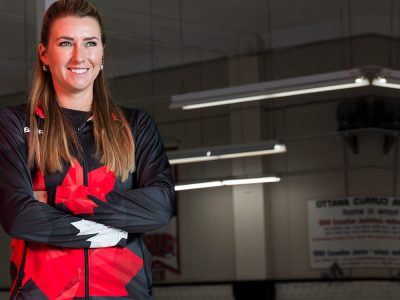By Dan Rubinstein
When Shawn Duke moved to Ottawa from Nigeria to study Architecture at Carleton University, he wasn’t aware of the historical significance of the buildings on Parliament Hill.
He planned to get a degree, find a job somewhere in Canada and start designing houses and skyscrapers.
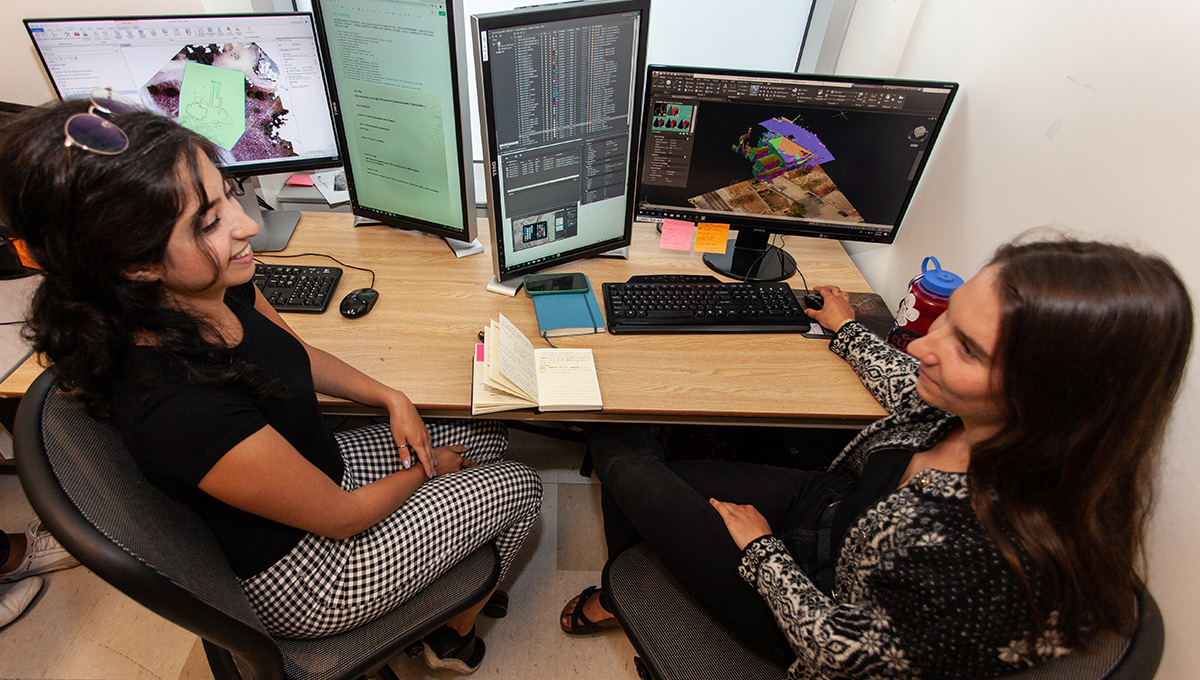
Students at work in the CIMS Lab
Nearly a decade later, Duke has both a Bachelor of Architectural Studies and a Master of Architecture from Carleton, and thanks to the skills he gained while part of the Carleton Immersive Media Studio (CIMS), he’s spent the past three years working on the team that’s renovating Centre Block—the first comprehensive renewal and modernization since it was built more than 100 years ago and the largest and most complex heritage rehabilitation project ever undertaken in Canada.
“I was in awe,” Duke says about the first time he toured Centre Block as a student. “The amount of intricate, ornamental detail is amazing.
“Not being from this country,” he adds, “it’s been really incredible to have an opportunity to get involved in something so important.”
Duke, an intern architect with Architecture49, is assisting with the restoration of Centre Block’s structural and aesthetic features and the design of a new welcome centre.
Much of his work involves a Building Information Model (BIM) of Centre Block—an extremely accurate 3D digital representation tied to a database of non-graphical information that allows architects, engineers and other construction professionals to share details, helping them not only document heritage elements but also anticipate and solve renovation challenges.
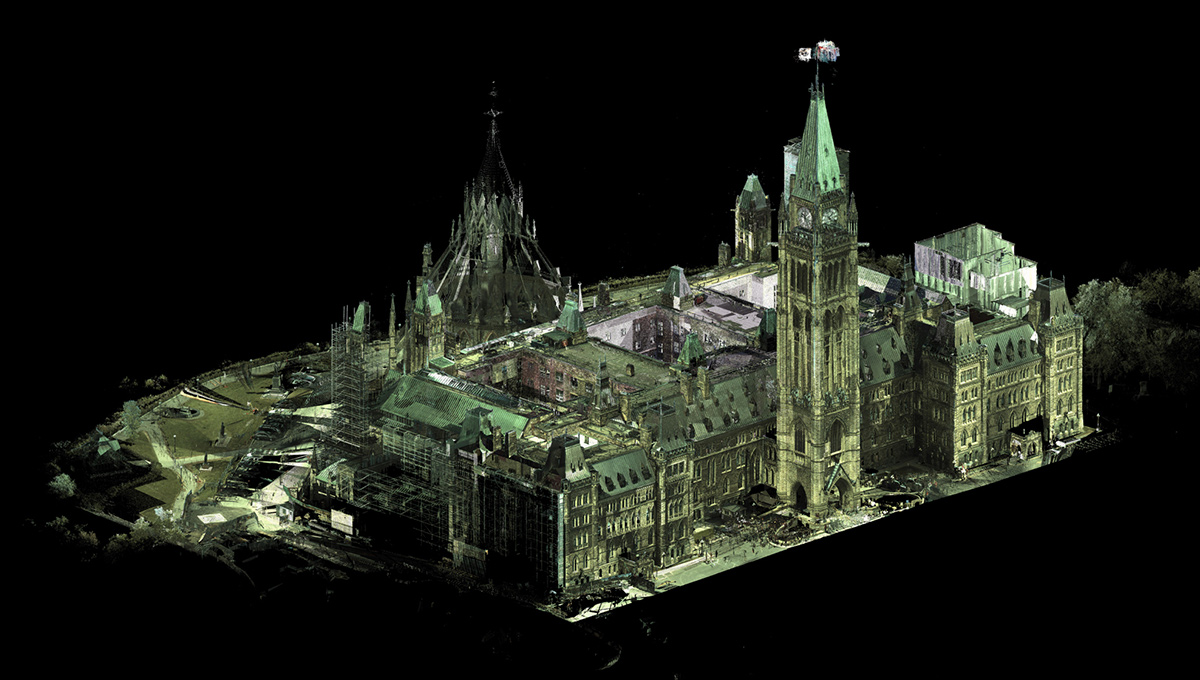
Building Information Model (BIM)
It’s a continuation of what Duke did at CIMS, a research centre affiliated with Carleton’s Azrieli School of Architecture & Urbanism that’s playing a key role in the Parliament Hill work and is a global leader in the use of new and emerging digital technologies for architectural rehabilitation and heritage conservation.
“CIMS has a studio-like environment,” says Duke, one of nearly 100 graduate and undergraduate students who have contributed to the lab’s work on Parliament Hill and one of eight to begin working after graduation for CENTRUS, a joint venture between the HOK and WSP companies leading the renovations.
“The setup at CIMS before the pandemic was that everybody sits near other people and helps each other. That mirrors what happens in industry and it’s a fantastic way to learn.”
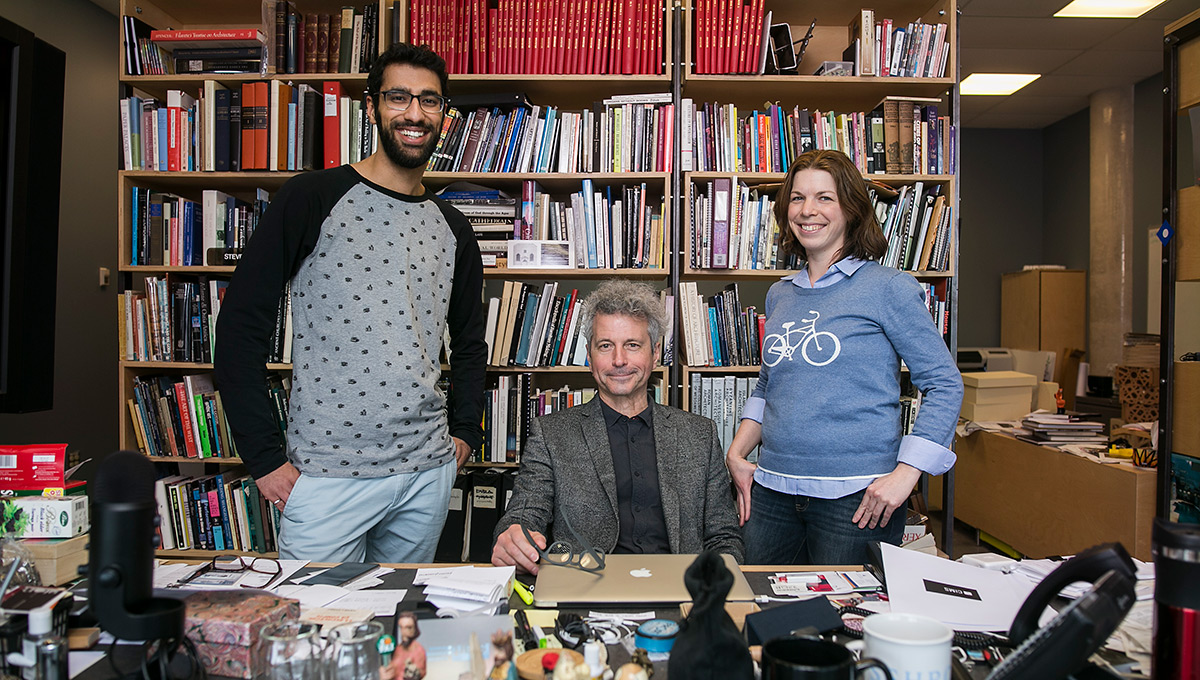
Creating a Stamp in Time
Hilary Romaniuk, who finished her Bachelor of Architectural Studies at Carleton last year and will be returning to start a master’s degree next fall, got an early start at CIMS.
After her first year, Lara Chow, the associate director of CIMS, asked the 18-year-old if she wanted a summer research job.
That position, which Romaniuk is doing full-time during a year off before grad school, helped her become proficient with Autodesk Revit—software that’s used to create BIMs—and become part of the lab’s Centre Block crew.
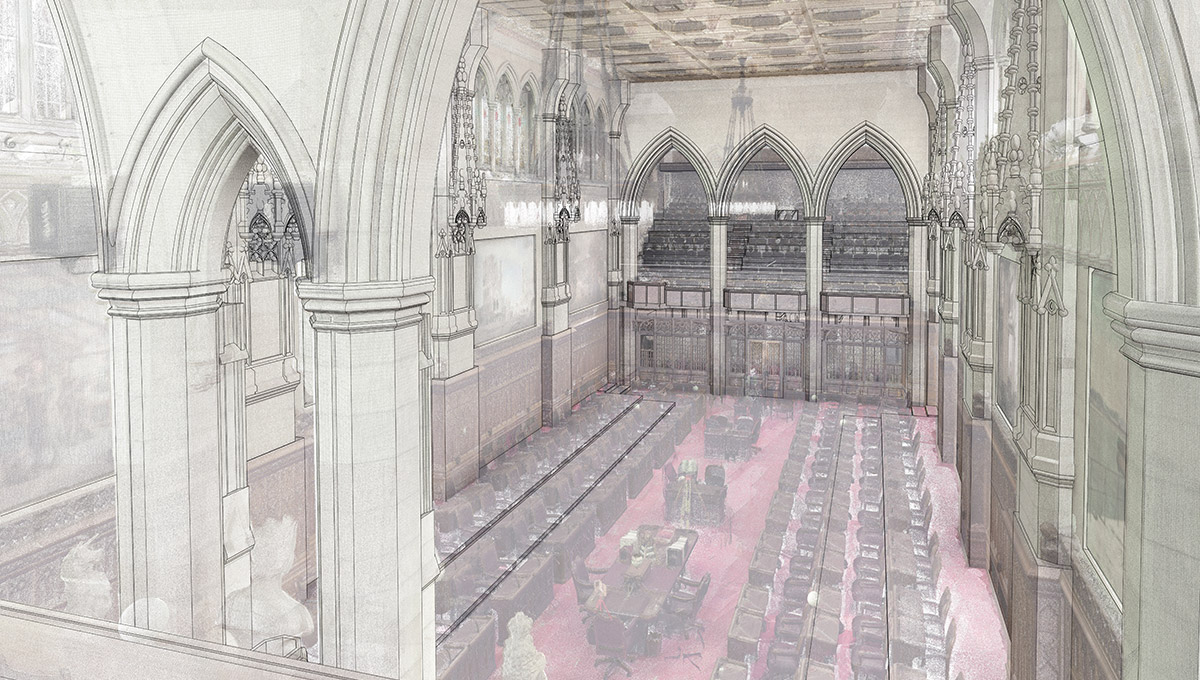
Senate Chamber in Centre Block’s East Wing
BIMs for heritage structures use laser scanned point cloud and photogrammetry data to ensure that all deformations and details are captured. “Walls and floors are rarely straight and angles are usually not 90 degrees,” Romaniuk explains.
“When you want to document the as-found conditions and figure out how to restore them, it can be very challenging. But that’s something CIMS is very experienced at doing.”
The lab has essentially created a perfect “stamp in time” of Centre Block—stonework, shelves, sculptures, everything—which CENTRUS is using when determining which elements to fix and which to replace.
BIMs are like a common language for the wide array of professionals who work on projects of this magnitude, says Romaniuk, who is now passing on the knowledge she has learned at CIMS to incoming students.
“These digital workflows and techniques are among the main skills I picked up and I’m confident that they’ll continue to help me in my career,” she says.
“As a research lab, we’re not always limited by deadlines or resources. We can step back and have big critical conversations about the broader world and what we have to offer.”
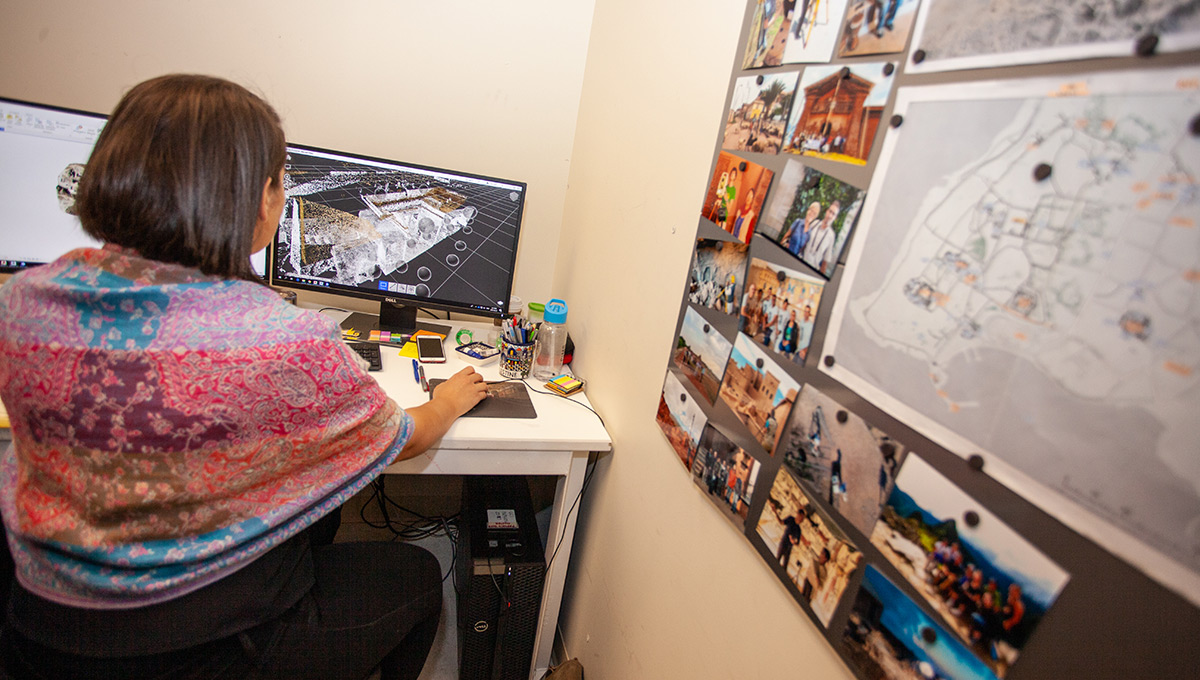
Stepping Stone to Career
Centre Block and other partnerships involving CIMS are not only technically challenging, they also require intense communication between dozens of people with different roles from a range of organizations.
As a project lead at CIMS for some of the most challenging heritage BIM work, Tyler Grunt co-ordinated a large team of students and worked closely with CENTRUS—a skill set he has brought to his current job as a BIM specialist at Pow Engineering in Ingersoll, Ont.
“CIMS exposed me to industry practices that involve constant communication and collaboration,” he says, “and prepared me for my current work.”
For the new heritage conversation projects that Grunt has been involved in at Pow, he’s been able to seamlessly integrate some of the digitization and modelling techniques he learned at CIMS into the company’s workflow and apply these methods in new areas.
“Because of the grand scale of the Centre Block project, we were involved in so many different workflows,” he says. “There was a steep learning curve, but it was the project of a lifetime because of both the building and the group of people it brought together.”
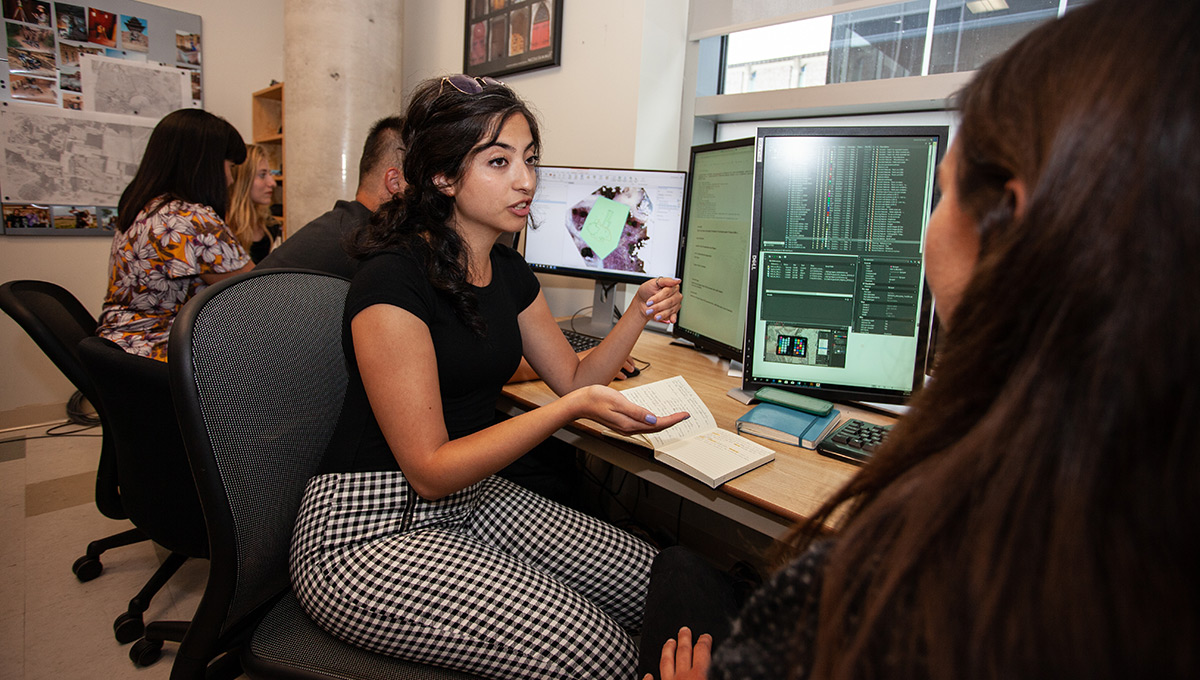
Monday, June 7, 2021 in Careers, Innovation, Technology
Share: Twitter, Facebook

